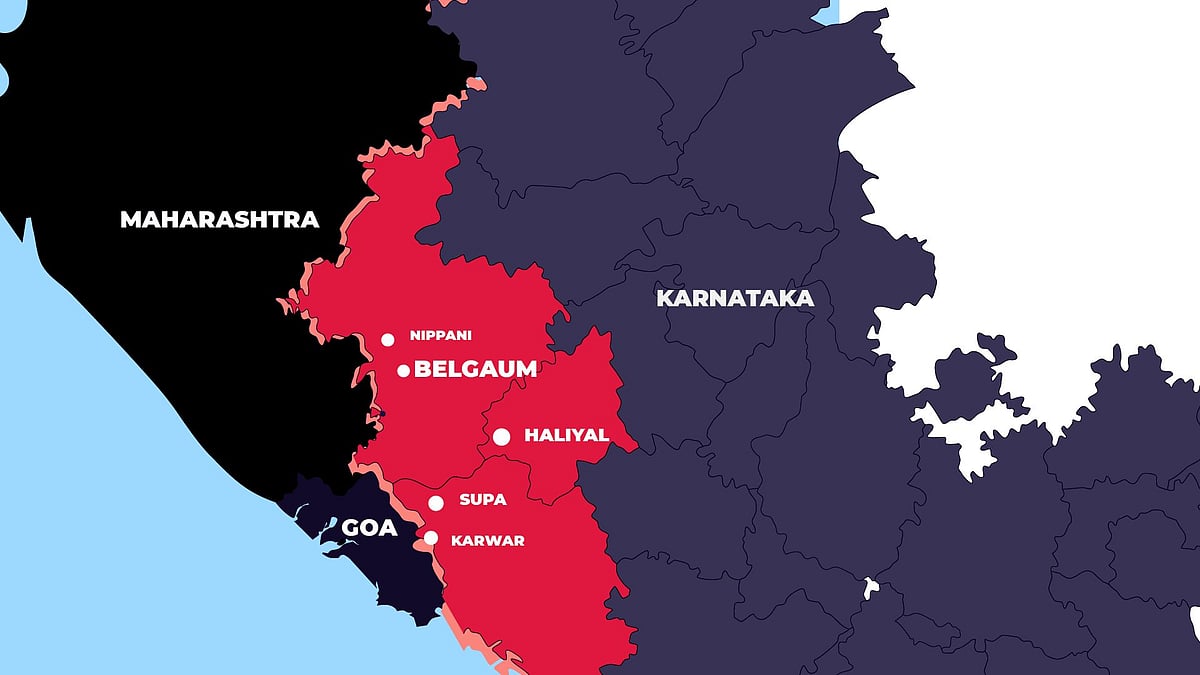Strong language chauvinism has recently erupted along the Karnataka–Maharashtra boundary, yet it is neither abrupt nor solely linguistic in nature. There are a disproportionately large number of Marathi and Kannada speakers worldwide. Is the abrupt recollection of a severely distorted geographical border what has people irritated if it is not language?

The dispute
- A petition by the Maharashtra government demanding 865 villages from five Karnataka districts and contesting various aspects of the State Reorganisation Act, 1956 Belagavi, Karwar, Vijayapura, Kalaburagi, and Bidar are the five districts.
- High levels of tension exist in Karnataka, particularly in the district of Belagavi, which borders Maharashtra.

When did it begin?
- Ever since the State Reorganisation Act was established by the Parliament in 1956, Maharashtra and Karnataka have argued about the inclusion of various cities and villages along their shared state border. The Justice Fazal Ali Commission, which was established in 1953 and delivered its report two years later, produced the conclusions on which the Act was founded.
- Previously, Mysore was renamed and the State of Karnataka was established; nonetheless, tensions between the state and the neighbouring Bombay state—later Maharashtra—rose after Karnataka’s formation on November 1, 1956.
- Maharashtra’s point of view: Maharashtra believed that the Belagavi district of Karnataka should be a part of the state. This belief resulted in a ten-year violent agitation and the establishment of the Maharashtra Ekikaran Samithi (MES), which continues to rule in some areas of the district and the city bearing its name.
The Centre’s response
- In 1966, the Union government established a Commission: On October 25, 1966, the Union government established a commission headed by former Supreme Court judge Justice Meharchand Mahajan amidst protests and pressure from Maharashtra. The chief ministers of Maharashtra and Karnataka at the time were VP Nayak and S Nijalingappa, respectively.
- A report that reached an agreement on the consolidation of towns and villages: It was anticipated that the report would resolve the conflict and serve as a legally binding document for both states. In its report, which was turned in by the committee in August 1967, it was suggested that 264 Karnataka towns and villages, including Nippani, Nandgad, and Khanapur, and 247 Maharashtrian villages, including South Solapur and Akkalkot, be merged with Maharashtra.
- Report presented in 1970, but no action was taken because it became a poll question: Despite being presented to the Parliament in 1970, the report was not discussed. The demands for Kannada-speaking regions to join Karnataka and Marathi-speaking regions to join Maharashtra both grew without the recommendations’ adoption. In numerous areas of Belagavi, MES made it a campaign issue and won a series of elections from district constituencies.
Bilingualism
- Both castes and communities on either side of the disputed line have extended families dispersed on both sides of the border.
- Harmonious cross-cultural exchange: For the past 120 years, Miraj town in Maharashtra has produced all of the harmoniums and sitars used by the best vocalists from Karnataka.
- Influence of the Bhakti movement on one another: In the past, Tukaram’s bhajans entered the hearts of Kannada speakers with the same ease that Basaveshwar’s saint-followers’ vachanas did so in the minds of Marathi speakers.
- Language influence: Thousands of Marathi terms have Kannada roots, and a comparable number of Kannada words have absorbed Indo-Aryan roots through Marathi.
Critique: Dispute is more of a political tool
- Conflict is evident but not linguistic in nature: The conflict bears the label of language but is not linguistic in nature. Although it bears the designation of a boundary, it is not truly territorial.
- The argument is evolving into more of a political demand because locals are aware that when politicians want to stir up trouble, it will happen. An instrumentalist-political demand is acquired when language chauvinism is invoked.
- Changing the focus of the ire: The truth is that, contrary to what they should think, neither the language nor the residents of the state border provide a problem for them. Finding a method to deflect the unrest is what important to the political war-lords, regardless of the harm it causes to the peace of the local communities.
@the-end
The maintainability of the petition is still in question almost two decades later. Karnataka has turned to Article 3 of the Indian Constitution to make the case that only Parliament has the authority to determine a state’s borders, not the Supreme Court. Article 131 of the Constitution, which specifies that the Supreme Court has jurisdiction in situations involving disagreements between the Union government and states, has been cited by Maharashtra.
